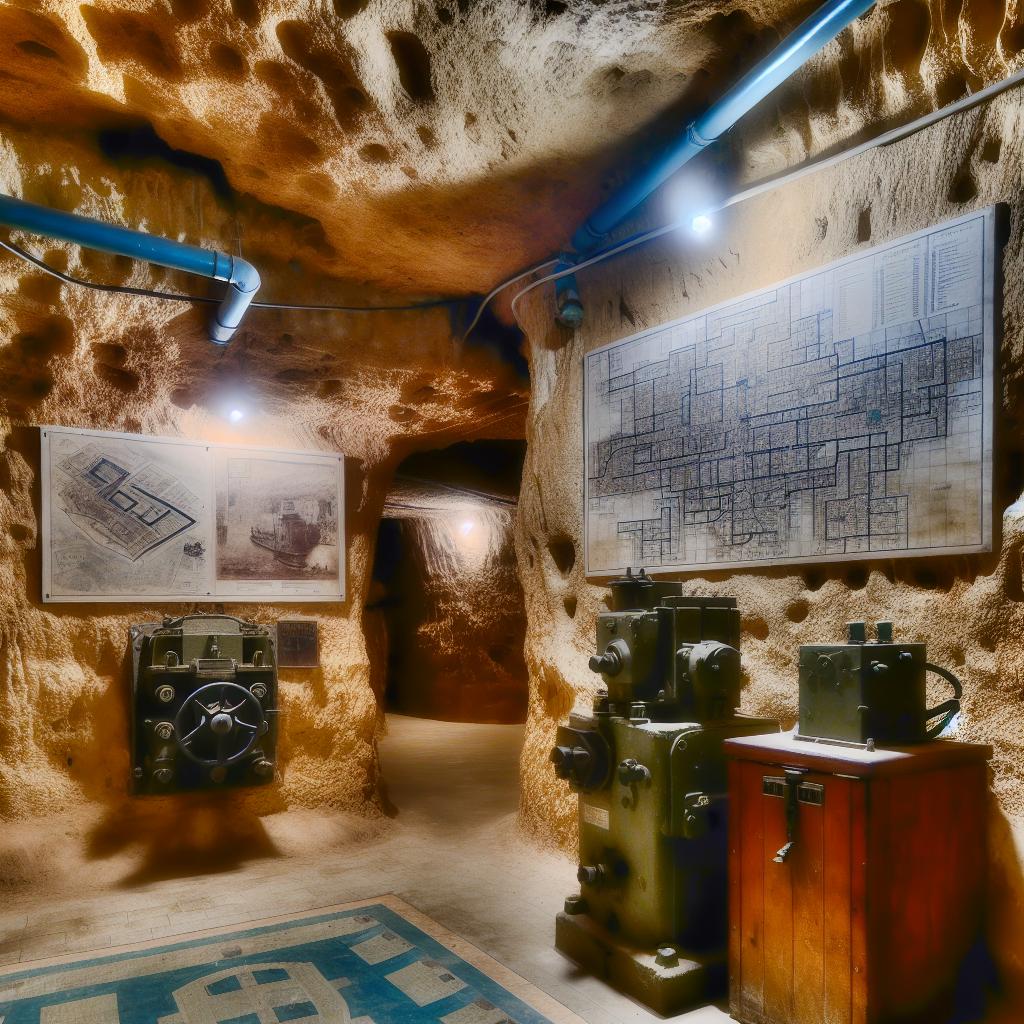The Lascaris War Rooms: A Hidden Gem in Valletta
The Lascaris War Rooms in Valletta, Malta, are an intriguing historical site bearing significant wartime echoes. Tucked away beneath the fortress of Valletta, these bunkers project a wealth of history and remain a testament to the strategic importance of Malta during World War II.
Historical Background
Constructed in 1940 during the height of World War II, the Lascaris War Rooms were originally designed to serve as a secret location for the Allied war effort. Named after Giovanni Paolo Lascaris, a prominent Grand Master of the Knights Hospitaller, these rooms were integral to the planning and execution of several pivotal operations during the war, including Operation Husky, the Allied invasion of Sicily in 1943.
The selection of the location beneath the fortress of Valletta was no accident. The fortifications provided a natural layer of protection against air raids and bombings, which were rampant during this turbulent period. The complex was constructed to remain hidden from the prying eyes of enemy forces, ensuring that crucial decisions made here remained under wraps until they were executed.
Significance During World War II
The War Rooms played a crucial role in the defense operations of the island. They housed the headquarters of the Royal Navy, British Army, and the Royal Air Force, providing a central hub for communication and strategic planning. The site became synonymous with military precision, earning its reputation as a nerve center for operation decision-making.
One of the primary uses of the War Rooms was to coordinate the defense of the vital Mediterranean shipping routes. Malta’s strategic position in the middle of the Mediterranean Sea meant that it was crucial for controlling naval passage and thwarting the Axis powers’ attempts to control this essential route. The success of operations coordinated from Valletta ensured that Allied forces could maintain supplies and communication lines from Europe to North Africa.
Another critical operation planned within these walls was Operation Husky, in 1943. This operation was pivotal as it marked the beginning of the end for Axis powers in Europe, with the invasion of Sicily leading to the downfall of Italian Fascism. The decisions made in the depths of the Lascaris War Rooms contributed to weakening the Axis hold on Europe, emphasizing the integral role this site played in the broader context of the war.
Visiting the Lascaris War Rooms
Today, visitors can explore this historic underground complex, which has been carefully preserved and restored. The War Rooms offer an educational and immersive experience, featuring numerous original artifacts from the era. These artifacts provide insight into the past and help bridge the gap between history and the present day.
Visitors can walk through the corridors and rooms where significant wartime strategies were devised, providing a glimpse into the daily lives of those who worked tirelessly during tumultuous times. The rooms showcase the original furnishings and equipment, including maps, telecommunication devices, and battle plans, each item telling a story of its own. Walking through these halls, one can easily imagine the hustle and bustle of officers communicating and plotting strategies with serious precision, all under the immense pressure of wartime needs.
Moreover, the War Rooms have been fitted with various installations that simulate wartime conditions, offering visitors a truly immersive experience. These installations use sound and visual effects to bring to life the tension and urgency of those days, ultimately creating a deeper understanding of the challenges faced by the people who worked here.
Practical Information for Visitors
Located a short walk from Valletta’s city center, the War Rooms are accessible and well-signposted. Visitors can easily incorporate this historical site into a day of exploring the rich cultural and historical offerings of Valletta. Guided tours are available, providing insightful commentary and anecdotes about the war rooms’ historical context and their impact on the outcome of World War II.
The guided tours are invaluable for those wishing to delve deeper into the history of this site. Knowledgeable guides offer detailed narratives about the operations planned here and share interesting anecdotes about the people who worked in the War Rooms, helping visitors connect with the personal stories behind the historical facts.
For more information on visiting the Lascaris War Rooms, you can visit their official website at Lascaris War Rooms. This portal provides detailed information on the opening hours, tour schedules, and any special exhibitions or events that might be taking place.
Additionally, visitors should consider exploring other related historical sites within Valletta to gain a comprehensive understanding of Malta’s wartime history. The city itself is a UNESCO World Heritage site, with a plethora of museums, cathedrals, and other fortified structures that echo its rich past.
This remarkable historical site serves not only as a reminder of the past but also as an educational tool for future generations, preserving the legacy of the resilience and strategic importance of Malta during one of the most challenging times in modern history. Through the careful preservation and presentation of the Lascaris War Rooms, the essential role Malta played in Allied strategies during World War II is honored and remembered, offering lessons in strategy, resilience, and the impact of global conflict on smaller nations.

